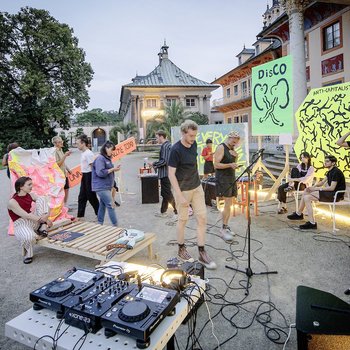They are close at hand, practical and often brightly colored. Everyone is familiar with them and has used them at one time or another: plastic cutleries. From complete sets of flatware to cute ice cream spatulas, from colorful cocktail skewers to mocha spoons and two- or three-pronged French fries forks, they facilitate uncomplicated consumption on the go, in between and on the side - at the ice cream parlor, at the train station, in the office, at campsites, picnics or garden parties. Plastic cutlery is the visible symbol of a carefree, optimistic throwaway culture that has spread across large parts of the globe since the 1970s. Mass-produced, inexpensive, easy to transport and simple to dispose of, plastic cutlery, as well as to-go cups, celebrate the carefree lives of urban nomads.
All the anonymously designed pieces of cutlery are things that we rarely perceive consciously and that we throw away under the naive assumption that, once in the trash can, they are immediately and entirely gone. In fact, they are not gone at all. Anonymous things only turn into anonymous garbage. Even where disposable cutlery is burned, it continues to exist in the form of emissions and leads to well-known consequences.
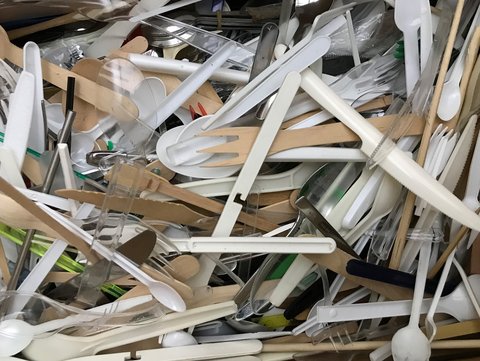
Spoon Archaeology - Making of
© Peter Eckart, Kai Linke, Foto: Helena Reinsch
Peter Eckart and his colleague Kai Linke have been collecting plastic spoons and cutlery of all kinds for many years. As for Kai Linke, it started rather by accident when a friend brought along some cocktail sticks from the 1970s. "Back then," Linke said in a joint interview with Peter Eckart on the platform ndion, "every luxury hotel still had its own cocktail sticks, and he had found a whole bundle of such sticks among bulky waste and said: 'Look at this! Wouldn't that be something for you?'" He later expanded his collection to include various eating utensils; however, the focus on disposable cutlery remained. Peter Eckart's collection came about in part because at some point he made it a subject of his teachings. According to Eckart, the cutlery "is a great way to introduce students to the subject of man - object - interaction and to explain how design works - in terms of construction, production, and so on, but also on the levels of symbolism, handling, and usage.
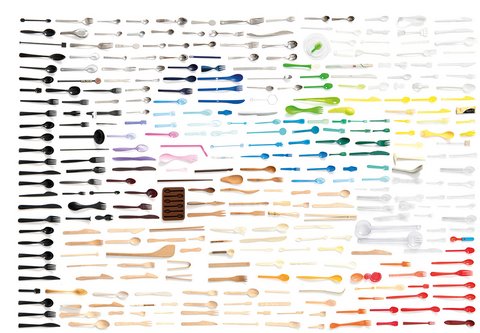
Spoon Archaeology - Poster
© Peter Eckart, Kai Linke, Dylan McGuire, Lukas Loscher, Foto: Helena Reinsch
Even though the exhibition also displays plastic knives, forks and many other cutlery items in addition to spoons, it is not without reason that it bears the title "Spoon Archaeology". On a „Complexity Map“ created by the two designers, one can trace the historical development of the relationship between food and cutlery. The spoon appears, so to speak, as a primordial instrument. The archaeological perspective is equally well-founded: Since July 3, 2021, single-use plastic products have been banned due to an EU regulation. Design and production have come to an end, and the multifaceted history of such things is therefore concluded. Products of daily consumption have become contemporary witnesses that provide information about a bygone era of consumer society. As artifacts that have become historical, the cutlery now says something about ecologically careless consumer habits, about the dishes for which they were intended and the context in which they were used, about brands that used them as advertising media and about the eating culture they represented. Because they are evidence of a particular era in the history of materials, technology, design, food, and culture, they concentrate the facets of a way of life.
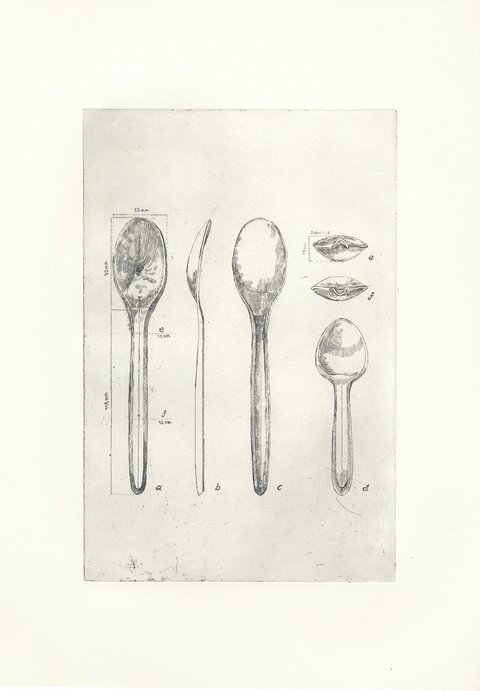
Liun Kim: Spoon Etchings, Druckgrafik, 2021
© Peter Eckart, Kai Linke, Liun Kim
But the exhibition is not a melancholic farewell. It not only takes a critical look back, but also forwards. The awareness of the problem created by means of the archaeology of the present is underscored by three films: In the 1972 documentary "Banana Leaf" by Ray and Charles Eames, the famous designer couple shows that - in the dining culture of southern India for instance - things can be done quite differently if both tableware and cutlery are replaced by a simple banana leaf. A specially produced film by Julie Gaston and Robin Schmidt shows people in Offenbach who eat with their hands. The third film deals with artificial intelligence and tries to find out how hands and cutlery could, so to speak, be combined in the future.
So on the one hand, the exhibition paints a picture of a society that cannot continue to function in this way. At the same time, however, it makes clear that there lies an opportunity to chance direction as a conclusion has been reached and the future can be consciously redesigned. Or, as Peter Eckart puts it: "When the last plastic cutlery has decomposed in four or five hundred years, people will look back on this era - and that's what we've brought forward, so to speak. That's why we also present the cutlery pieces like insects in boxes that, in a sense, museally elevate what's on display."
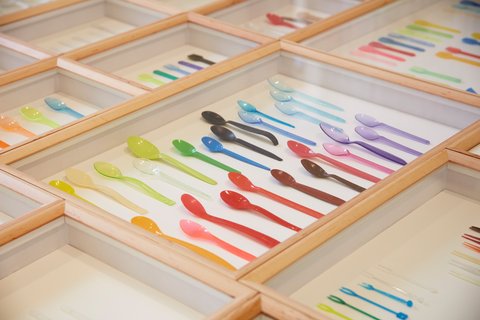
Plastikbesteck im Schaukasten
© Peter Eckart / Kai Linke, Foto: Heiko Prigge
Also of interest:
With or without a spoon
Anna Dünnebier knows more about the history of eating than almost anyone else in Germany. Here, among other things, she describes how people ate before spoons became established, and the correct way to use a spoon.
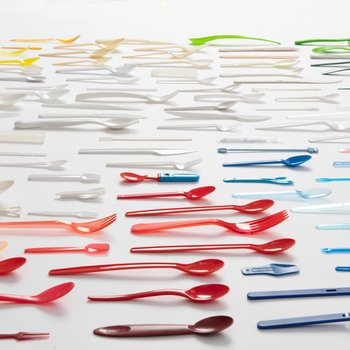
Spoon Archaeology meets Lunch for Locals
The Spoon Archaeology exhibition is designed as a reaction to the EU ban on single-use tableware. But what will replace it? The designers Peter Eckart and Kai Linke, whose cutlery collections are on display in the Kunstgewerbemuseum this year, asked themselves that very question. It has to be sustainable and, of course, fit for purpose. The answer they have come up with has a far less futuristic ring to it than you might expect: the human hand. We join the Palais Café to try it out.
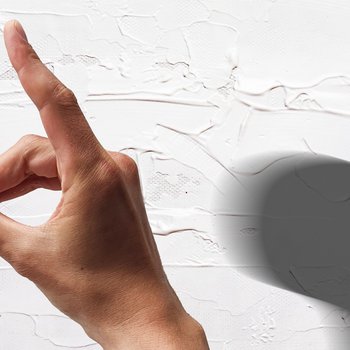
It is the end of the world, as we know it. Time to reboot!
By bringing utopian thinking back to design practice, the newly found Design Campus at the Kunstgewerbemuseum SKD was set to reimagine the future of the world in the Age of Crisis. Here, the design curator and journalist Aline Lara Rezende describes what possibilities arise through collective action and design.
